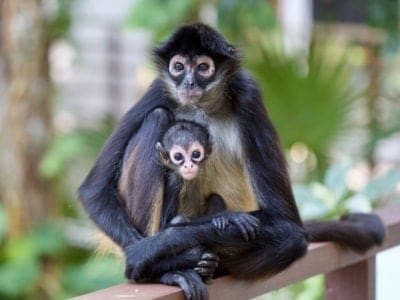Peacock Butterfly
.jumbotron {
background-image: url(“https://a-z-animals.com/media/2021/10/peacock-butterfly-header-400×300.jpg”);
}
}
@media only screen and (min-width: 641px) and (max-width: 920px) {
.jumbotron {
background-image: url(“https://a-z-animals.com/media/2021/10/peacock-butterfly-header-470×370.jpg”);
}
}
@media only screen and (min-width: 921px) {
.jumbotron {
background-image: url(“https://a-z-animals.com/media/2021/10/peacock-butterfly-header.jpg”);
}
}
Peacock Butterfly
Aglais io
The eyespots on this butterfly’s wings deter predators from attacking.
Peacock Butterfly Scientific Classification
- Kingdom
- Animalia
- Phylum
- Arthropoda
- Class
- Insecta
- Order
- Lepidoptera
- Family
- Nymphalidae
- Genus
- Aglais
- Scientific Name
- Aglais io
Read our Complete Guide to Classification of Animals.
Peacock Butterfly Conservation Status
Peacock Butterfly Facts
- Prey
- Sap, nectar, honeydew
- Name Of Young
- egg
- Group Behavior
-
- Solitary
- Fun Fact
- The eyespots on this butterfly’s wings deter predators from attacking.
- Most Distinctive Feature
- Eyespots on its wings
- Other Name(s)
- European peacock butterfly
- Gestation Period
- 10 days for eggs to hatch
- Litter Size
- Up to 500 eggs
- Habitat
- Woodlands, gardens
- Predators
- Mice, birds
- Diet
- Herbivore
- Type
- insect
- Common Name
- Peacock butterfly
- Special Features
- 3
- Location
- Europe, Asia
- Group
- solitary
Peacock Butterfly Physical Characteristics
- Color
-
- Brown
- Yellow
- Red
- Blue
- Black
- Skin Type
- Skin
- Lifespan
- 12 months
- Weight
- less than one ounce
- Length
- 1-2 inch body
- Age of Sexual Maturity
- After period of hibernation
- Age of Weaning
- Immediately
This post may contain affiliate links to our partners like Chewy, Amazon, and others. Purchasing through these helps us further the A-Z Animals mission to educate about the world’s species..

Spiders that fly! Fish that walk! And 1000+ more incredible animals. Discover them all for FREE
.photo-gallery {
–margin: 0px auto 0px;
–padding: 0px 0px 0px 0px;
}
.gallery-link {
background-image: url(“https://a-z-animals.com/media/2021/10/peacock-butterfly-1024×535.jpg”);
background-repeat: no-repeat;
background-size: cover;
background-position: center;
height: 500px;
justify-content: center;
text-align: center;
align-items: center;
display: flex;
border: 2px solid #000;
}
.gallery-link img {
height: 50%;
}
@media only screen and (max-width: 768px) {
.gallery-link {
height: 300px !important;
}
}
View all of the Peacock Butterfly images!
“A 2005 scientific experiment revealed that not all predators are scared away by this butterfly’s eyespots.”
When you look at a Peacock butterfly, it’s easy to tell how it got its name. The eyespot pattern on its wings is very similar to the pattern on a peacock’s feathers. These butterflies are found in woodlands, gardens, and pastures in Europe and Asia. They are medium-size butterflies with a wingspan of up to two and a half inches. The Peacock butterfly lives on a diet of nectar and sap.
4 Incredible Peacock Butterfly Facts!
- One of the strangest facts about this butterfly is it can make a hissing noise by rubbing its wings together.
- When it comes to identification, the female Peacock butterfly is a little larger than the male.
- The caterpillar of the Peacock butterfly has black spikes all along its body.
- These butterflies hibernate over the winter in the hollows of trees.
Peacock Butterfly Species, Types and Scientific Name
This insect’s common name is the Peacock butterfly. It’s sometimes called the European Peacock. Aglais io is its scientific name. This butterfly is a member of the Nymphalidae family and is categorized in the order of Lepidoptera. There are 6,125 butterflies in this family.
Three species in the Aglais genus:
- Aglais io
- Aglais urticae
- Aglais ichnusa
Appearance: How to Identify a Peacock Butterfly
The bright colors of a Peacock butterfly make identification fairly easy. Its wings are a rusty red color with a black or gray border. This butterfly has an eyespot on each of its wings. Its eyespots are a mixture of the colors blue, white, black, and yellow. Its body is covered with brown bristly hairs and it has two thin antennae.
Interestingly, there are some Peacock butterflies without eyespots. They’re called blind specimens. However, a Peacock butterfly with no eyespots is a rare sight. This insect’s body is one to two inches long. The wingspan of this butterfly ranges from two to two and a half inches. The largest wingspan of the Peacock butterfly is 2.7 inches.
Compare this butterfly with the Io moth (Automeris io). This moth is bright yellow and has eyespots on its hindwings. Though they share the presence of eyespots, the Io moth’s wingspan is larger in size ranging from two and a half to three and a half inches.
The Peacock butterfly’s eyespots are used as a defense against predators. The butterfly sits quietly with its wings folded. But, when a predator such as a bird or a mouse approaches it, the butterfly quickly opens its wings revealing its eyespots. The predator is caught off guard and thinks it’s looking at the eyes of a larger animal!
If a Peacock butterfly wants to hide from a predator, it folds its wings. This covers its bright colors revealing the brown underside of its wings. This makes it easy to blend in with a tree trunk. A third method of self-protection is also one of the most interesting facts connected with this insect. It can make a hissing noise by rubbing its wings together. This sound is a deterrent to some predators.
Peacock butterflies are solitary unless its breeding season.

Habitat: Where to Find Peacock Butterflies
Peacock butterflies live in Europe and Asia. Woodlands, pastures, and meadows are all habitats of this butterfly. It’s common to see them moving from flower to flower in backyard gardens as well.
Diet: What Do Peacock Butterflies Eat?
These flying insects are constantly looking or foraging for food. They land on dozens of flowers and shrubs each day. Peacock butterflies use the sensors in their feet to check a flower for appetizing nectar. Once it finds a supply of nectar, the butterfly uses its proboscis as a straw to draw the liquid up into its body.
What do Peacock butterflies eat?
The nectar of a Buddleia is a very popular food for Peacock butterflies. They also drink juice from fallen pieces of fruit.
What eats Peacock butterflies?
Its small size makes this butterfly easy prey for many predators including birds and mice.
How to Get Rid of Peacock Butterflies
Peacock butterflies are pollinators and won’t cause any harm to a backyard garden. But in another part of its life cycle, it takes the form of a caterpillar. It’s true some types of caterpillars can eat through the vegetables in a garden. But the Peacock butterfly caterpillar isn’t included in that group. This caterpillar eats nettles and leaves but tends to leave vegetables alone.
View all 117 animals that start with P
Peacock Butterfly FAQs (Frequently Asked Questions)
What is the lifespan of a Peacock butterfly?
The last part of this insect’s life cycle is the adult stage. The lifespan of an adult Peacock butterfly is about one year.
Where are Peacock butterflies found?
These insects are found in Asia and Europe. They live in woodlands, meadows, and gardens. They are most likely to be found in a location with lots of Buddleia growing. The nectar from Buddleia is a favorite food!
Is a Peacock butterfly a moth?
No. Peacock butterflies and moths are different insects. One basic difference is moths are active at night whereas Peacock butterflies search for food during the daytime.
A second difference is moths have short antennae with a feathery appearance. Peacock butterflies have slender antennae with a club at the end of each one.
Also, butterflies feed on nectar they drink via a proboscis. On the other hand, moths are nourished from stored fat inside their bodies, and they don’t have a proboscis.
Why is it called Peacock butterfly?
Its identification as a Peacock butterfly comes from the pattern of eyespots on its fore and hindwings. These eyespots look a lot like the eyespots on the feathers of a peacock.
Are Peacock butterflies rare?
In one location they may be considered rare while in another location they are a common sight. In England and Wales, they are a familiar sight in gardens. However, they aren’t seen as often in Scotland.
The conservation listing of this butterfly is Least Concern with a population described as stable.
What does a Peacock butterfly symbolize?
Along with the solid facts about this butterfly, there are a few symbolic meanings attached to it. It can symbolize a happy marriage, good health, and luck. The life cycle of a butterfly can symbolize transformation in a person’s life.
What was the conclusion of the 2005 Peacock butterfly experiment?
In the conclusion of the experiment, it was determined that the eyespots on the wings of a Peacock butterfly don’t always deter a predator from attacking it.
How does the Peacock butterfly protect itself?
When it sees a predator in the area, this butterfly sits still on a branch or leaf with its wings folded up. The brown undersides of its wings help it to hide in plain sight. When a bird or other predator approaches, the Peacock butterfly spreads its wings revealing its colorful eyespots. This startles the predator into thinking it’s eye to eye with a large animal! The predator is so disturbed it usually moves away.
What do White Peacock butterflies eat?
The White Peacock butterfly is different from the Peacock butterfly. The white variety of Peacock butterflies is found in the southeastern portion of the United States as well as in Mexico and part of South America.
Their main food is nectar from a plant called the turkey tangle fogfruit. They also drink nectar from Spanish needles, petunias, and members of the family of daisies.
What is the Peacock butterfly related to?
Of course, Peacock butterflies are related to White Peacock butterflies though their colors are very different. Peacock butterflies are also related to the Aglais urticae and the Aglais ichnusa.
Sources
- Butterfly Conservation, Available here: https://butterfly-conservation.org/butterflies/peacock
- StNicks, Available here: https://stnicks.org.uk/get-inspired/blog/inspiration/5-fantastic-facts-about-butterflies/
- rspb, Available here: https://www.rspb.org.uk/birds-and-wildlife/wildlife-guides/other-garden-wildlife/insects-and-other-invertebrates/butterflies/peacock-butterfly/
- Florida Wildflower Foundation, Available here: https://flawildflowers.org/know-your-native-pollinators-white-peacock/
- Wikipedia, Available here: https://en.wikipedia.org/wiki/Aglais_ichnusa

















